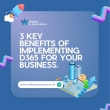Welcome to the world of procurement strategy, where businesses orchestrate the acquisition of goods and services with finesse and foresight.
Procurement strategy is not merely about purchasing; it’s a holistic approach to aligning procurement activities with overarching organisational goals. And it’s about mitigating supply chain risks while optimising value.
Furthermore, strategic procurement isn’t a short-term fix it’s a continuous, organisation-wide endeavour. It involves collaboration across departments, strategic purchasing decisions, and meticulous supplier selection.
A procurement strategy isn’t just about saving costs; it’s about maximising the efficiency of procurement processes while minimising operational vulnerabilities. Moreover, companies often establish dedicated strategic procurement teams to drive plans based on insights from current procurement practices.
What is a procurement strategy?

A procurement strategy is a comprehensive plan to establish enduring partnerships with competitive suppliers to obtain high-quality goods and services within a defined cost framework, ensuring timely delivery. It delineates the purchasing decision-making process and encompasses various stages of the procurement cycle.
Effective procurement strategies are built upon internal assessments and external market insights, crafting budgets and actionable measures accordingly.
Strategic procurement involves meticulous evaluation of vendors, market conditions, pricing data, and other pertinent factors to determine optimal selections and pricing.
Additionally, in the body of the text, procurement strategies necessitate thorough analysis to discern the most suitable goods or services, suppliers, pricing structures, and application support services. Moreover, they facilitate informed decision-making throughout the procurement process, optimising resource allocation and fostering operational efficiency.
What is its purpose?

A procurement strategy is the blueprint for aligning a company’s vision, goals, and objectives with its operational practices. It is a cornerstone of production and essential for optimising resource utilisation while maintaining the highest quality standards. By implementing strategic procurement, businesses gain access to structured data crucial for prioritising purchases and balancing quality and cost-effectiveness.
Moreover, an effective procurement strategy enables companies to introduce and reinforce cost-minimisation practices while ensuring the timely delivery of the right products. However, the approach facilitates informed choices between stages, from data acquisition to decision-making, enhancing overall efficiency.
Selecting Relevant Procurement Strategy

1. Cost Reduction
One fundamental aspect of a robust procurement strategy is cost reduction. This strategy aims at boosting profits by identifying saving opportunities and minimising the total cost of ownership (TCO).
It’s pivotal for organisations operating under budget constraints. Cost reduction involves negotiation with suppliers, internal expense adjustments, and process automation. Effective it project management services can also streamline operations and drive down costs. From top-level decisions to departmental actions, every aspect plays a role in achieving cost savings.
2. Risk Management
Another critical component is risk management. This strategy involves preparing for and mitigating the impact of unforeseen events on the procurement process. By anticipating potential risks, organisations can develop effective responses, ensuring continuity in the supply chain.
3. Supplier Management, Optimisation, and Relationship Building
Optimising supplier management and fostering solid relationships are equally vital. This strategy entails selecting the right mix of partners to obtain the best procurement strategies, goods, or services at optimal costs. It also involves continually evaluating and enhancing supplier relationships to align with the company’s standards and procurement goals.
4. Vendor Development
Vendor development is a pivotal aspect of cloud procurement strategy. It fosters symbiotic relationships with key suppliers to enhance product quality and affordability.
This collaborative approach ensures mutual benefit through feedback and suggestions.
In cases where a single supplier is indispensable but struggles to meet standards, the client intervenes to assist in process improvement. This strategy is especially crucial for limited suppliers or unique goods, where efficient vendors are paramount for achieving strategic objectives.
5. Global Sourcing
Global sourcing is crucial for modern procurement, particularly for businesses aiming to streamline operations. It involves obtaining goods and services from various regions to maximise cost efficiency.
By tapping into international markets, companies can benefit from economic differences and gain access to specialised expertise and technology. This approach enables businesses to increase production while cutting costs and boosting profitability.
A key component of this strategy is teaming up with a trusted business intelligence consultancy for effective navigation of global markets and efficient power bi implementation services.
6. Green Purchasing
Green purchasing is an emerging trend shaping procurement practices. It involves conscientious decision-making to minimise environmental and health impacts.
Companies prioritise suppliers committed to sustainable processes and offer eco-friendly products. This approach aligns with ecological goals and fosters innovation and social responsibility within the supply chain.
7. Corporate Social Responsibility (CSR)
In the realm of procurement strategy, Corporate Social Responsibility (CSR) emerges as a pivotal component. This approach deems CSR standards integral to the procurement process, aiming to align company initiatives with societal objectives.
As part of CSR practices, procurement teams meticulously assess suppliers, scrutinising their methodologies from raw material sourcing to production, shipping, labour conditions, and compensation levels. Corporate procurement strategy compliance principles are seamlessly woven into procurement contracts, ensuring adherence at every stage.
8. Total Quality Management (TQM)
Total Quality Management (TQM) signifies an ongoing optimisation process within procurement strategy. Unlike its counterparts, TQM doesn’t fixate on specific procurement objectives but encompasses the entire transaction lifecycle.
Emphasising accountability among all stakeholders, TQM prioritises enhancing the customer journey, streamlining procurement processes, and fostering employee engagement and proficiency. Rooted in continuous improvement through collaborative teamwork and comprehensive training, TQM underscores holistic efficiency in procurement endeavours.
9. Procurement Training
In the dynamic landscape of procurement, ongoing training assumes paramount importance. While procurement strategies evolve, their execution ultimately rests upon personnel proficiency.
Thus, acquiring hard skills (tool and software utilisation) and soft skills (effective negotiation) becomes imperative for maximising team efficacy. Moreover, ensuring alignment within the procurement team is essential when integrating upgraded practices.
How to Develop an Effective Procurement Strategy

The foremost step in cultivating an effective procurement strategy is to focus meticulously on the unique needs and objectives of the organisation.
Equally important is the cultivation of robust commercial skills, enabling the delineation of the company’s end goals and the identification of the most economical avenues to achieve them.
Furthermore, adept comprehension of big data can unveil critical gaps and opportunities within procurement processes, facilitating informed decision-making when formulating tailored procurement strategies.
Engaging the expertise of a business growth consultancy can provide invaluable insights and strategic direction in optimising procurement practices.
Moreover, a profound understanding of the individuals engaged in the supply chain is imperative.
Nurturing soft skills and fostering collaborative partnerships with suppliers and stakeholders empower CPOs to discern the genuine needs of all parties involved. Strategic insight and a relentless focus on results underpin an effective procurement strategy.
1. Analysing the Current Procurement Process
To begin crafting an effective procurement strategy, assessing the current procurement process and scrutinising the working ecosystem is imperative. First and foremost, delve into the company’s spending culture to understand what is being purchased and how funds are allocated.
Identify the various business units and departments involved in procurement and pinpoint any associated inefficiencies. However, this analysis provides a solid foundation for developing a fact-based procurement strategy. Furthermore, evaluating the total cost of ownership (TCO) is crucial to uncover any hidden costs that may not be immediately apparent.
2. Understanding Business Needs
After scrutinising the current procurement landscape, the next step is determining the business needs.
It’s essential to align procurement practices with current and future business requirements and ensure they align with the overarching business strategy.
This involves examining contracts, engaging with stakeholders, and collaborating with procurement professionals to gain valuable insights.
3. Conducting Market Analysis
Once internal business needs are understood, conducting a comprehensive market analysis is crucial for software development consulting services. This involves identifying market players like suppliers, distributors, competitors, and clients.
Keeping market research updated is essential because market conditions can change rapidly. By staying informed about external factors, procurement professionals can develop a strong procurement strategy that is both ambitious and realistic.
4. Crafting Precise Procurement Objectives
Defining clear and specific procurement objectives is paramount to effectively steering the company towards its strategic goals. In the dynamic business landscape, it’s imperative to regularly assess and realign objectives with overarching company visions and policies.
Objectives must be specific and realistic and reflect the available resources. Prioritising these objectives based on their impact on the bottom line can further streamline procurement efforts.
5. Persuading Stakeholders for Procurement Strategy Overhaul
Collaboration with stakeholders is critical to revamping procurement strategies successfully.
Engaging investors, finance professionals, employees, suppliers, and customers ensures a comprehensive approach. By involving stakeholders actively, the procurement strategy gains valuable insights and fosters a more efficient process.
6. Defining Comprehensive Procurement Policies
After outlining procurement objectives and garnering stakeholder support, the next crucial step is establishing procurement policies. These policies should address existing inefficiencies and streamline workflows across departments.
Organisations can ensure smoother procurement operations by defining approval processes, specifying preferred suppliers, and setting budget thresholds. Additionally, leveraging existing policies and adapting them to current needs minimises redundancy and maximises efficiency.
7. Crafting a Procurement Strategy
When outlining a procurement strategy, the initial step involves synthesising the data gathered in the preceding stages. Firstly, provide an overview of the current procurement landscape, detailing existing processes, challenges, and opportunities.
Moreover, define the specific objectives the strategy aims to achieve, ensuring they are SMART—Specific, Measurable, Assignable, Realistic, and Time-bound. Furthermore, these goals should align with the company’s overarching needs and objectives.
Next, develop a tactical plan outlining the steps to accomplish these objectives. Assign responsibilities for each task and ensure stakeholder buy-in.
Besides, emphasises the importance of constant monitoring and measurement to track progress and adjust the strategy as necessary. Lastly, ensure the approach is flexible enough to adapt to changing circumstances and resource availability.
8. Implementing Procurement Software
Procurement software plays a pivotal role in modernising procurement processes. Moreover, it eliminates manual data entry, minimises errors, and enhances efficiency.
Additionally, automation reduces the time and cost associated with procurement activities. Moreover, by streamlining administrative tasks, it frees up employees to focus on more strategic initiatives. However, it significantly reduces the risk of errors in the procurement process.
9. Evaluating Human Capital and Facilitating Training
Understanding your team’s skill level is crucial for successful procurement strategy in project management. First, conduct a thorough assessment of your team’s understanding of procurement processes and goals.
Then, foster an environment of open communication where concerns can be addressed and feedback is encouraged. Furthermore, targeted training should enhance specific skills, especially in utilising new tools like procurement software.
Importance of Procurement Strategy

When markets fluctuate unexpectedly, companies seek avenues to gain a competitive edge and differentiate their offerings.
Strategic sourcing and procurement lay the groundwork for innovation and experimentation, providing a framework for companies to adapt effectively.
Moreover, an efficient procurement policy ensures the timely delivery of quality goods and services, fortifying a company’s resilience against unforeseen challenges.
By fostering transparency and trust, strategic procurement nurtures enduring supplier relationships, paving the way for exclusive deals at reduced costs. This, in turn, bolsters revenue streams and enhances overall profitability.
Conclusion
In conclusion, developing and implementing a robust procurement strategy is indispensable for companies aiming to navigate the complexities of modern markets.
By integrating procurement strategy into procurement strategy, businesses can enhance decision-making processes, optimise resource allocation, and fortify supplier relationships.
Moreover, procurement strategies serve as a guiding light, aligning organisational goals with operational practices, thus fostering efficiency and resilience.
Furthermore, continuous evaluation and adaptation must be considered. Procurement strategies must evolve alongside market dynamics and technological advancements to remain effective.























